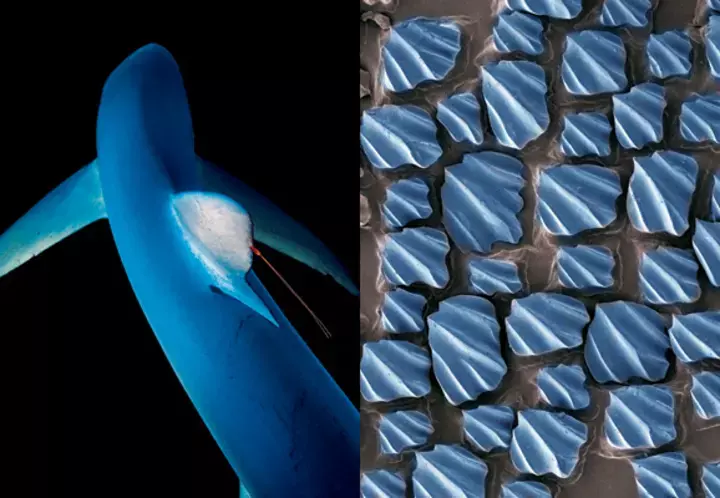Biomimicry in Subsea Robotics: The Ocean’s Endless Inspiration
As the maritime industry continues to evolve, researchers are turning to the ocean’s creatures for inspiration in developing innovative subsea robotics. Biomimicry, the practice of drawing inspiration from nature to solve complex problems, has been a driving force behind some of the most significant advancements in underwater technology.
The ocean, covering approximately 71% of the Earth’s surface, is home to an estimated 230,000 known marine species, with perhaps millions more yet to be discovered. Each of these species has evolved unique adaptations to thrive in the challenging underwater environment. By studying these adaptations, researchers can develop cutting-edge technologies that mimic the efficiency, agility, and sustainability of marine life.
A Brief History of Biomimicry in Subsea Robotics
One of the earliest documented examples of biomimicry in subsea robotics is attributed to Leonardo da Vinci, who studied fish to conceptualize a submarine. Fast forward to the present day, and researchers are still drawing inspiration from the ocean’s creatures to develop advanced underwater machines.
Recent Breakthroughs in Biomimicry
Recent advancements in biomimicry have led to the development of innovative subsea robotics that mimic the movements and behaviors of various marine species.
Manta Ray-Inspired Soft Robots
A team of researchers from North Carolina State University has recently beaten their own record for the fastest swimming soft robot. By drawing inspiration from manta rays, they have improved the robot’s ability to control movement in the water. This breakthrough could lead to more efficient and agile underwater vehicles.
Salps: Inspiring Efficient Underwater Vehicles
Scientists at the University of Oregon have discovered that colonies of salps swim through the ocean in giant corkscrew shapes using coordinated jet propulsion. This unusual kind of locomotion could inspire new designs for efficient underwater vehicles, enabling them to cover larger areas with minimal energy expenditure.
Jellyfish Robots: Cleaning the Ocean Floor
Experts at the Max-Planck Institute for Intelligent Systems are developing jellyfish robots designed to rid the ocean floor of plastic without disturbing coral-reef species. These robots mimic the gentle pulsating movements of jellyfish, allowing them to collect plastic debris without harming delicate ecosystems.
Amphibious Robot Turtles: Adapting to Multiple Environments
Yale researchers have created an amphibious robot turtle with limbs that can adapt their shape, stiffness, and behavior depending on whether they are on land or in the water. This adaptability makes these robots ideal for various applications, from underwater exploration to land-based tasks.
Squid-Like Robots: Untethered Swimming
Engineers at the University of California San Diego have built a squid-like robot that can swim untethered, propelling itself by generating jets of water. This design allows for greater maneuverability and independence, making it suitable for remote or hard-to-reach underwater locations.
The Future of Biomimicry in Subsea Robotics
As Leonardo da Vinci once said, “All our knowledge has its origins in our perceptions.” With an estimated 20,000 marine species described every decade, the ocean’s creatures will continue to inspire innovation in subsea robotics. As researchers continue to explore the ocean’s depths, we can expect to see even more groundbreaking developments in biomimicry.
The Phrase “There Are Plenty More Fish in the Sea”
The phrase “there are plenty more fish in the sea” is often used to comfort someone who has experienced a setback, whether it’s a romantic relationship or a missed opportunity. But in the context of biomimicry, the phrase takes on a new meaning – there are plenty more marine species to inspire innovation in subsea robotics.
Conclusion
Biomimicry is a powerful tool for driving innovation in subsea robotics. By studying and mimicking the adaptations of marine life, researchers can develop more efficient, agile, and sustainable underwater technologies. As we continue to explore the ocean’s depths, the possibilities for biomimicry-inspired innovations are endless. The maritime industry can look forward to a future where robots swim like manta rays, clean the ocean floor like jellyfish, and adapt to multiple environments like amphibious turtles. To stay ahead in this exciting field, industry professionals should keep a close eye on the latest developments in biomimicry and consider partnering with research institutions to bring these innovative technologies to market.
By embracing biomimicry, the maritime industry can not only drive technological advancements but also contribute to the preservation and sustainability of our ocean’s ecosystems.
List of Sources
- THERE ARE PLENTY MORE FISH IN THE SEA – Cambridge Dictionary
- There Are Plenty More Fish in the Sea: Definition, Meaning, and Origin
- There Are Plenty of Fish in the Sea: Definition, Meaning. and Origin
- there are plenty more fish in the sea – TheFreeDictionary.com
- Plenty more fish in the sea Definition & Meaning – Merriam-Webster
- plenty of fish Meaning & Origin | Slang by Dictionary.com
- There are plenty of fish in the sea – Idioms by The Free Dictionary
- Definition of ‘there are plenty more fish in the sea’
- Understanding the Idiom: “other fish in the sea” – Meaning, Origins …
- there are plenty more fish in the sea | meaning of there are plenty …


Leave a Reply